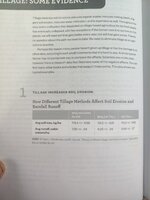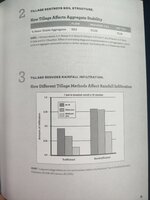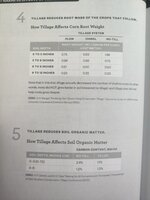Long story short: Some people near by me, (Non zoo) got a nice Fuck you from power company (they're supposed to read meter and warn if amount gets over 1k, they did neither) So they got a 3k bill out of no where due to lazy company. Well they know I told power company to fuck off years ago. So they wanted to do the same, being rural they don't need to grovel to a city or any thing.
So not having to deal with codes and policies meant to chain you to leaches and demand you bleed for them.
So with that, one can throw together a livable power system for apx 6k dollars. That will be 240/120 @ 6kw
2Kw's of solar in this area costed apz $1700 Cad (this is scalable, you can buy 1kw to start and add on as needed, all though it is ideal to build array in one go as less head aches matching panels)
Inverter, Chinesium Hybrid (Built in AC charger, and Solar controller) 6Kw split phase dual chargers
(How they make these is they take 2* 3Kw Hybrids and put it in one case and do all the seting up for you in the box)
- Flooded lead acid batteries, 2K dollars new 8 * 6v 225AH = 48V at 225AH, Now here where it gets complicated and some tricky balancing needs to be done, for best life, you never want to take your batteries much below 25% for flooded batteries, so 225 * 0.25 = you'd only have 56AH usable for best calendar life, that is not much at all, So most chose 50% depth of discharge, this will give you middle of the road life (Apx 10 years)
Type: Traction battery (True deep cycle) Can be paralleled up to 3 (As per manufacturer) Actual up to 4. ( 4 * 6v 225AH = 6V @ 900AH )
Options? Fork lift Batteries (Best bang for the buck, and sized right can last up to 20+ years)
Enhancements? Single point watering system, Strongly recommended ; Cell Balancers, Strongly recommended (Imbalance is what often kills a battery bank the fastest)
Pros of FLA? Resilient, hard to kill, tolerates rather good screw ups, not very sensitive to temperatures. a good beginners battery, and cheapest per watt.
Newer tech? Lithium Iron Phosphate
Pros: can be used to 80% depth of discharge with no affect on life cycle count so you buy a 200AH LiFePO4 you get 160Ah usable, Fast absorption of power from solar panels, Long lived, will not catch fire like other lithium techs.
Cons: Cost, High initial cost (slightly higher than lead acid now days) , more temperature sensitive, must be kept above 5c. Must have a management system (commercially made ones come with it)
So what is the best choice? Depends on what you have available, Lead acid is easy to get, easily to change around as needed as you learn how much power you need for your life style, As such I oft recommend people start with lead acid while they learn, once you hit a happy medium start saving money for a lithium bank when the lead acid finally fails.
Now days Inverters especially hybrids are getting cheap, So you want to invest the bulk of your money on a good reliable inverter, next will be the solar panels, third is wire, you want a good heavy gauge wire, this is the cause of poor performance of systems is under sized wiring.
My rule is no less than 2 awg for the system core, no matter the voltage, so that means 2 awg wire from the solar panels to the charge controller (if separate from inverter) to batteries to inverter. but practicalities come in here, higher voltage is your friend, most charge controllers can take up to 100 or better volts, this allows much smaller wire per watt from your solar panels to charge controller / Inverter.
but to get your feet wet, you can cobble together a workable if not enjoyable system fairly cheaply, in that case I can tell you I was rather comfortable off a 540w array and an 12V 1800w modified sine wave inverter, and 6 * 6V 230ah flooded lead acid batteries.








